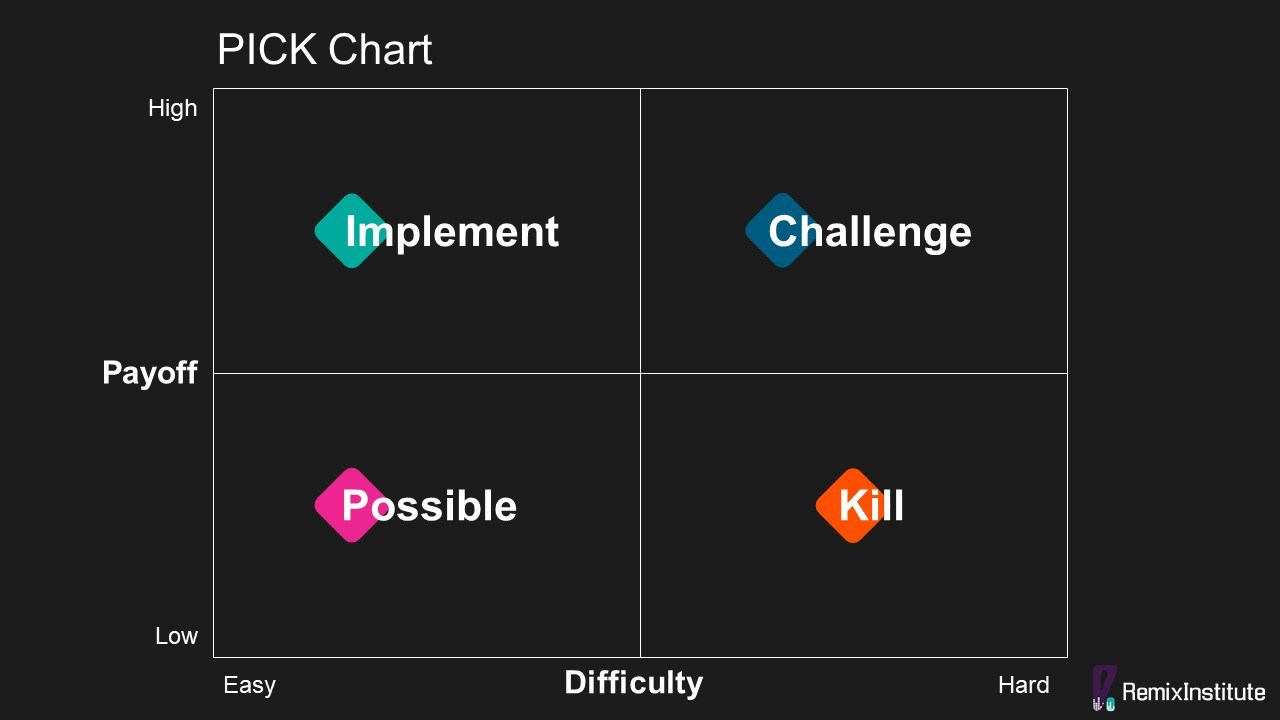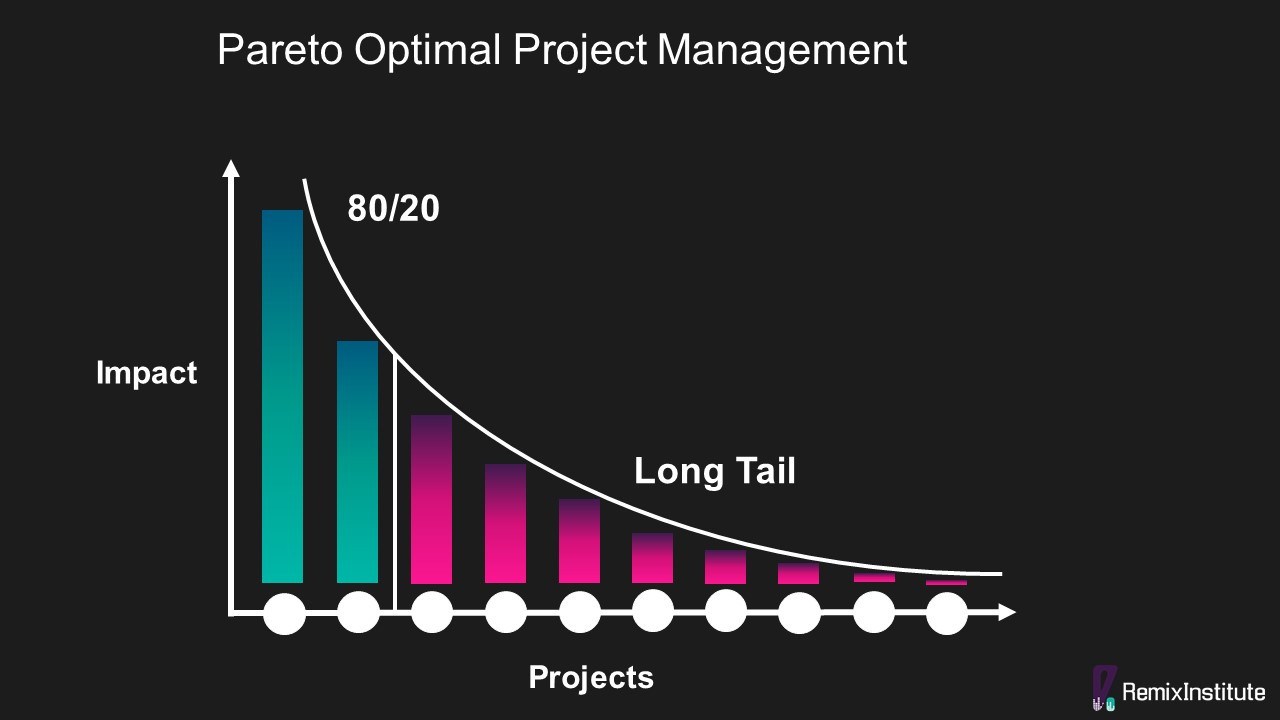Data Scientists and Analysts are starting to overflow their cups with mostly non-value added work at the request of stakeholders. And many don’t have the courage or confidence to say “No” to that. This also applies to many working and business professionals in other verticals and professions. Put simply, you need to build confidence, stop being a wimp, and start saying “No” to pointless work.
Data Scientists can become the new decision-makers at companies and should be picking their own value-added projects
When a company hires a data science team, the customers of that team are typically non-technical stakeholders. They have a general idea of what they want to get out of data science, but they don’t know specifically what they want. Most of the time, the business units think of “data science and analytics” as just the team that runs reports and fetches them data when they need it (like a dog or a monkey). A data science and analytics team’s core responsibility isn’t building reports in Tableau and PowerBI; that’s the job for the Business Intelligence team (oddly, many BI professionals have started to call themselves analysts or data scientists). The job of a Data Scientist is basically:
- Synthesize and mine the data to create actionable business recommendations from it
- Automate decision-making using statistical, machine learning, and AI models
- Create data science products and tools for end-users (what we at Remix Institute like to call Prefab AI or AI Augs – similar to the Deux Ex video game series).
- Boost profit by finding opportunities for revenue growth, cost savings, operational efficiencies, and business process optimization
If the business unit stakeholders have your data science team working on anything else not on that list or anything that’s not providing value or growth, then you should not be working on it. Data Science teams should be picking their own projects based on the feedback and pain points of stakeholders. Data Science is not IT or BI and should not be building reports or taking ticket requests. (More on this below)
Reasons Why Non-Value Added Work Keeps Piling Up
Many data scientists and non-technical stakeholders are unaware of the Planning Fallacy. The Planning Fallacy is a psychological phenomenon which states that we are unrealistically optimistic about predictions on how much time it will take to complete a task and underestimate the actual time it will take. Since we’re quite bad at estimating how long things take, it means we’re saying “Yes” to projects more often than we should because we think it’ll take less time to complete. This causes us to be stretched thin and hit burnout and desperately try to find one of the most scarce and valuable resources: time. Saying “Yes” to projects feels good as it may strengthen the bond between you and the stakeholders, but sometimes people say “Yes” out of fear of being construed as unproductive, negative, a slow worker, and a non-team player.
5 Ways To Say No and Pick Your Own Projects
There are many practical ways of saying No to non-value added projects while at the same time being able to still be construed as a team player and being able to pick the projects you’d like to work on. Below are 5 practical ways of saying No:
- Establish Hofstadter’s Law as one of the guiding operating principles of your data science team. Hofstadter’s Law is a recursive axiom that states it always takes longer than you expect, even when you factor in Hofstadter’s Law. As a simple heuristic, you should probably just double or triple the initial estimated time you gave to complete a project. This serves as a countermeasure to the Planning Fallacy.
- Say “No” to project requests politely, but stand firm and don’t be a doormat. Business stakeholders will come from many departments, with competing priorities and incentives. When they approach you with some project that’s “high priority” for them, it may not be high priority or high growth potential for the company’s overall business objectives. An email or message saying something like this would be a polite way of saying No:
“Hello, we understand the unique desire for this project, and it looks like an interesting business problem. After reviewing the requirements, we’ve estimated the project completion times for it. Unfortunately, this is not something our team can work on at this time as we’re currently focused on other high priority growth initiatives, but we can have a planning discussion in the future. If you have an ROI analysis for this project, it’ll help us put it into the top of the queue.”
It’s important to stand firm because many times the stakeholders don’t like taking No for an answer, and they’ll try to sweet talk and convince you why you should actually work on their project. Just hear them out but still say No politely. - Prioritize projects by putting all of them on a PICK Chart. A PICK Chart is a Lean Six Sigma tool, developed by Lockheed Martin, for organizing and prioritizing project ideas. PICK stands for Possible, Implement, Challenge, Kill. Below is the breakdown of each:
- (P) Possible. Possibly work on the project if it’s Easy To Do but Low Payoff
- (I) Implement. Definitely work on the project and make it a priority if it’s Easy To Do and High Payoff
- (C) Challenge. Challenge the project if it’s Hard To Do but High Payoff
- (K) Kill. Kill and throw in the trash bin all projects that are Hard To Do and Low Payoff

The best approach is choosing to focus on 1 or 2 key projects in the top left quadrant. This type of project prioritization is what we at Remix Institute call “Pareto Optimal Project Management.”
For this, you will need to outsource project prioritization to your manager for political cover. Of course, give him/her your ideas on what should be prioritized (Top Left Quadrant) in order to work on the projects you want to work on. As a data scientist, you should recommend prioritizing projects that are AI automation or machine learning use cases and de-prioritize analysis and reporting requests.

- Push Back Any Arbitrary Deadlines. Most deadlines are just pulled out of thin air and just provide unnecessary pressure. In the past, I’ve seen project requests come in from senior management, with an arbitrary deadline attached, and after a while of not hearing about the status of the project, senior management forgot they assigned it in the first place. In that case, the project was definitely useless busywork with a pointless deadline.
This is one of the untold truths about upper management: many times, they are just knowingly assigning busywork to you.
However, this is not something you can tell your stakeholders even though it’s true. Instead, you’ll need to communicate this in a more politically palatable manner. An email or message saying something like this would be more suitable to push back arbitrary deadlines:
“Hello, I understand that it’s important to meet this deadline. Would you be able to extend this by X days/weeks as we’re currently working on [PROJECTS IN TOP LEFT QUADRANT OF PICK CHART] which has been of high interest to the executives?”
Or
“If you want X done by Y, I’ll be able to deliver A and B of X, but not C and D of X.”

- Establish Occam’s Razor as one of the guiding operating principles of your machine learning model development. This topic would require another blog post in of itself, but Occam’s Razor (or the Principle of Parsimony) posits that a model should be minimally adequate and the simplest model is the best model possible. Remember, machine learning is supposed to simplify business processes and automate decision-making so making a behemoth model with a large code base only means it’s a naval ship with low agility and high maintenance. This would mean that you’re spending a lot of your free time maintaining it, which reduces the amount of time you can work on other things. You should also introduce Occam’s Razor to your stakeholders so they don’t overcomplicate the machine learning model development either.
As stated, the Principle of Parsimony is an interesting topic and would be another blog post in itself. Simplest doesn’t always mean least technical debt or lowest maintenance. Sometimes a project does require complexity. That’s why it’s important to identify the “minimally adequate” solution that is right-sized. If all that’s needed is a trend line in Excel, do you really need a deep learning model?
Conclusion
Data Scientists can become the new decision-makers at a company and its most valuable department as long as the C-Suite starts to see their impact on the P&L. In order to do that, Data Science teams must stand firm, build confidence, and efficiently prioritize high-value work while de-prioritizing and even killing non-value added work. This includes learning the skills of effective project management and politely saying “No” to stakeholders. In doing so, Data Science teams can focus on high ROI, revenue boosting projects such as machine learning and automation products that can be integrated into business processes. This gets the attention of the C-Suite and elevates the status of Data Science.
